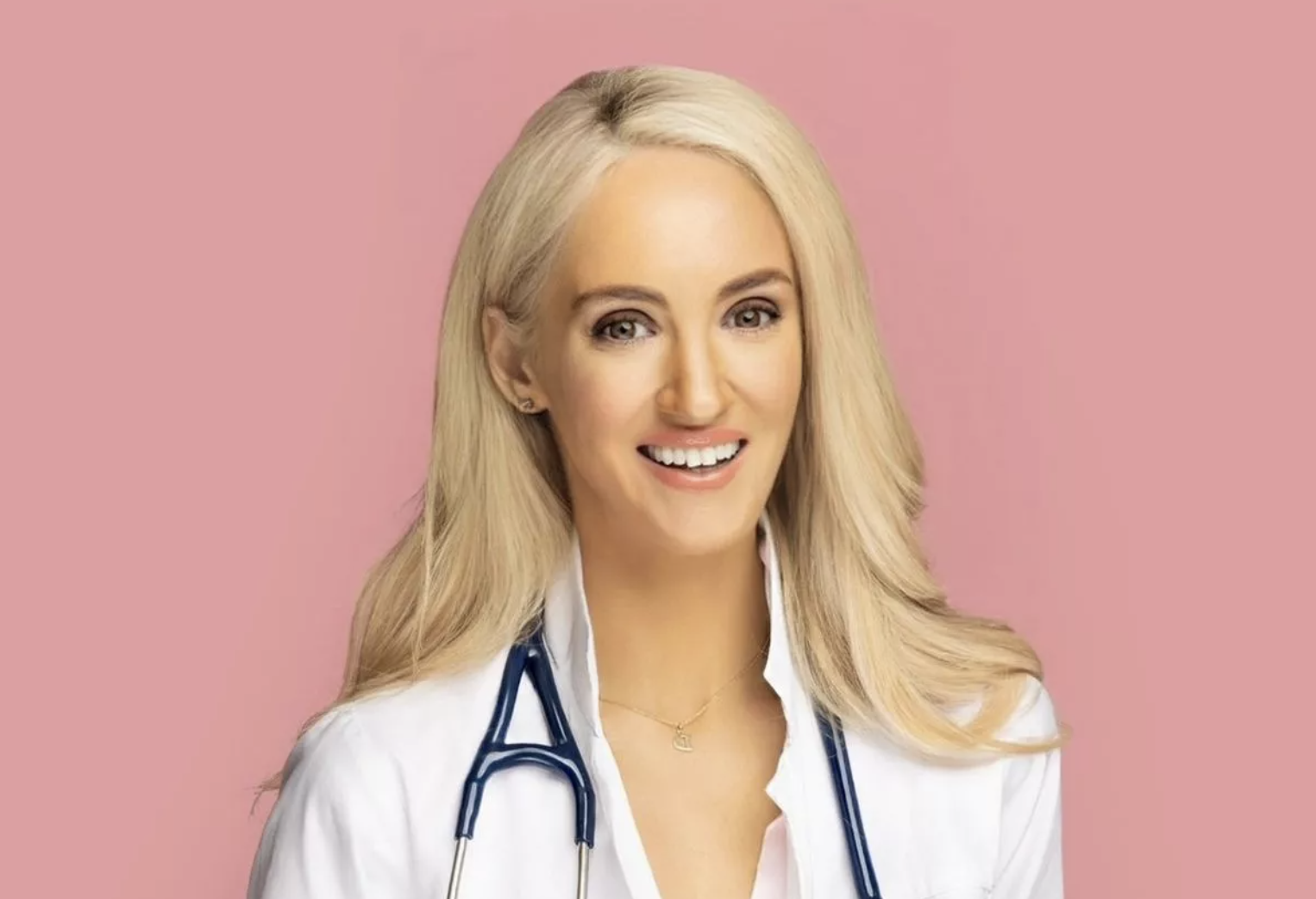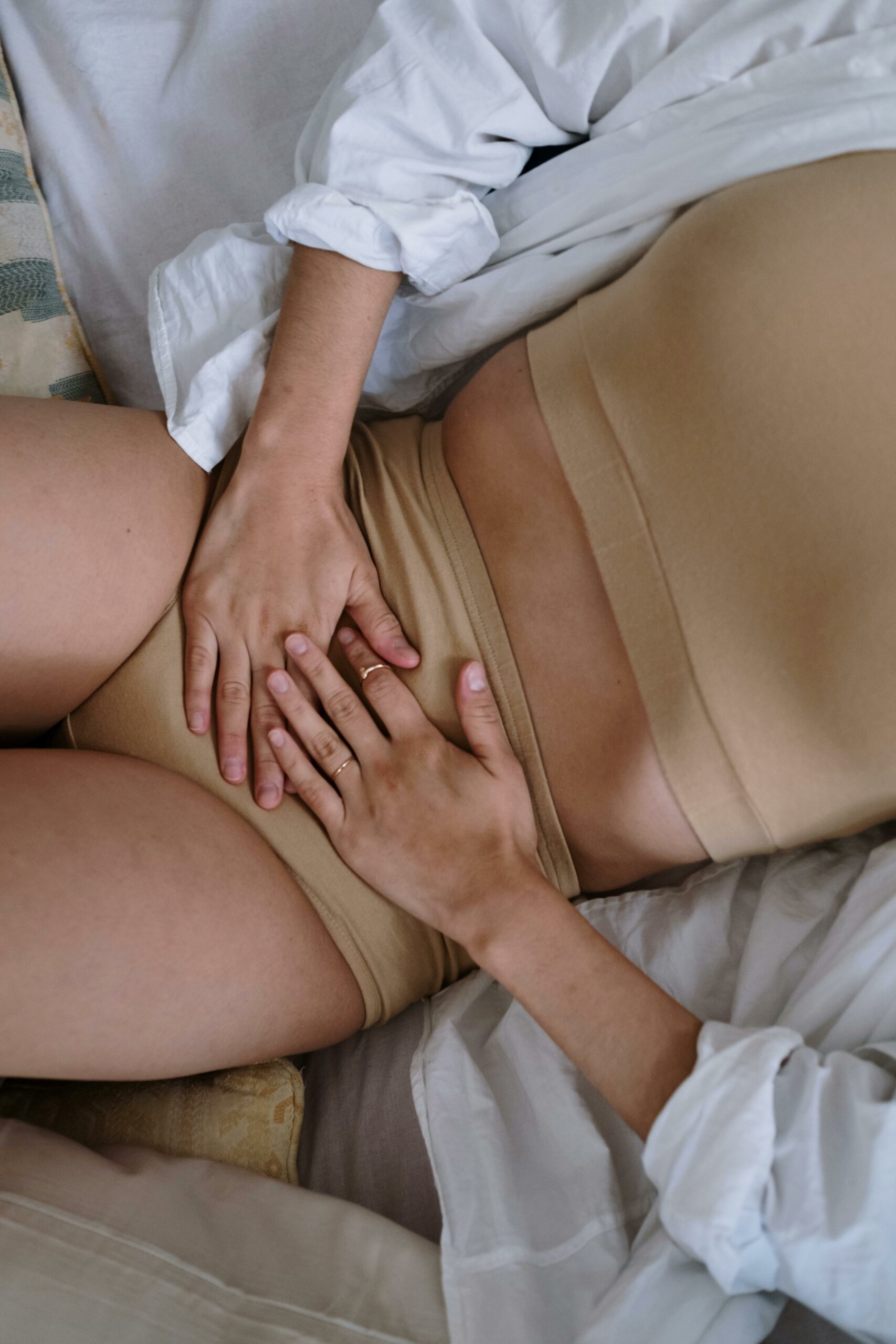Endometriosis, although common, is a condition in which a lot of women and men know little about.
Many associate the inflammatory disease with having “bad periods” however, we are here to tell you it is so much more than that.
In light of Endometriosis Awareness Month, Goss.ie spoke to the incredible Dr. Doireann O’Leary to hear her thoughts and knowledge on the chronic condition that affects approximately 10 per cent of women in Ireland.

“This isn’t a lifestyle condition”
What is Endometriosis?
Endometriosis is when tissue or cells similar to the lining of the uterus, called the endometrium, grow outside the uterus.
This leads to inflammation and the growth of scar tissue in the pelvic area and on occasion, elsewhere in the body, “case reports of these endometrial sounds in the heart or the brain or the lung, so they can actually occur anywhere but most commonly occurring in the pelvis,” says Dr. Doireann.
“Those endometrial-like cells and endometrial-like tissue is inflammatory tissue, that can cause women to experience pain, most commonly pelvic pain and it can start out with pain just before periods or during periods so that like cyclical pain, but over time that can actually progress to a chronic, long-standing ongoing pain.”
The GP describes endometriosis, commonly known as endo, as an “invisible chronic illness.”

There are four known stages of endometriosis. It is important to note that the severity of endometriosis does not always correspond to the amount of pain and discomfort experienced.
Minimal or mild endometriosis can be deep infiltrating and can cause symptoms that impede quality of life, whereas severe endometriosis may not.
According to the Endometriosis Association of Ireland, stage 1 or minimal endometriosis manifests as small patches or surface lesions on or around the pelvic cavity.
Stage 2 or mild endometriosis is more widespread and presents more implants that can be deep or superficial, and scarring can begin to occur. It is often found on the ovaries, Pouch of Douglas and uterosacral ligaments.

Stage 3 or moderate endometriosis begins to infiltrate the peritoneum and pelvic organs. There are deep implants present and cysts can develop on one or both ovaries when tissue attaches to the ovaries, resulting in blood and tissue shedding.
Blood can collect and turn brown, this is referred to as ‘chocolate cysts’. In this stage, thin bands of tissue known as filmy adhesions may form, which may bind organs together.
Stage 4 or severe endometriosis affects the majority of the pelvic organs, causing anatomical deformation and adhesions. This stage is classified by a number of deep implants and large cysts on at least one ovary.
Thick adhesions occur throughout the pelvic area, resulting in extensive scar tissue and a higher chance of infertility.
What are the symptoms of Endometriosis?
Raising awareness of this condition is incredibly important as many women’s lives can be affected by the disease, causing them to miss work, cancel social activities and put a strain on their relationships.
Endo has been commonly referred to as a “period condition” – assuming that it only affects a woman’s menstrual cycle, however, the disease has been proven to affect other parts of the body.
While pelvic pain, or intense cramping during one’s period, is one of the main symptoms, women with endo can experience pain during intercourse, heavy bleeding, nausea, vomiting, fatigue, lack of energy, bloating and bowel and bladder symptoms including diarrhoea and constipation.

Endo can also affect a woman’s fertility.
Dr. Doireann points out that “sometimes women don’t have any symptoms until they are experiencing infertility and then they go for investigations and they find out that they have endometriosis.”
Therefore, the importance of trying to find a diagnosis, not just for peace of mind but in order to be potentially prepared for such struggles is crucial.
So how common is the diagnosis?
This “silent” endometriosis that Dr. Doireann refers to, where women don’t show any symptoms of the condition probably means that the number of those who have endo, could potentially be much higher than the number of those diagnosed.
Many women report symptoms to their GPs, however they fail to be “officially” diagnosed as Dr. Doireann points out that it takes on average “seven to nine years” for a woman to be properly diagnosed with endo.

She says: “Probably the incidence of endometriosis is higher than we realise or higher than is reported, like in the medical textbooks, because a lot of women don’t have symptoms, and they don’t know that they have it.”
“And numbers do vary, you know, you’ll see figures anywhere from like 10 to 15% of the population, depending on what you read. But maybe it’s even more than that… and as well, a lot of women don’t get diagnosed properly.”
“Endometriosis is not just a painful period”
How do you go about getting a proper diagnosis of Endometriosis?
In order to be “officially” diagnosed, a gynaecologist will perform a laparoscopic surgery or keyhole surgery as it is known, and have a look into the pelvis and see if they can identity traces of the condition.
Unfortunately, endometriosis is not typically picked up over an ultrasound or MRI scan.
Dr. Doireann says: “The true diagnosis is taking a sample looking into the microscope… and because of that, it’s a huge undertaking to undergo general anaesthetic to go into hospital to have surgery, that’s huge.”

However, Dr. Doireann mentions that “there is a move now to kind of start working towards what we’re calling a like working diagnosis, saying okay your symptoms are very suggestive of endometriosis, but we don’t have a tissue diagnosis.”
GP’s are now calling this a working diagnosis, which can be helpful, however Dr. Doireann points out that “psychologically, it can be tricky to understand what you’re dealing with here”, which can be difficult for patients.
Many women seek out a diagnosis for peace of mind.
What is the treatment for Endometriosis look like?
Currently there is no known cure for endometriosis and treatment is aimed at controlling symptoms.
Many women will be put on hormonal contraception to help with their symptoms, however what bests treats their pain will vary from patient to patient.
Dr. Doireann says: “For some women they say, I was started on the pill and actually really relieved my symptoms and I was fine. And then you’ll have others who say, the Mirena [coil] really helped me and then you’ll have people say none of those things touched my pain.”

It is evident that more research is needed on the disease, but Dr. Doireann reminds readers that we do have specialists here in Ireland such as Dr. Hugh O’Connor, who is a consultant Obstetrician & Gynaecologist based at the Coombe Women and Infants University Hospital, in Cork.
He was accredited by the Australasian Gynaecological Endoscopy and Surgery Society (AGES) for his work in Monash Health in Melbourne, Australia.
During this time, he was awarded the prestigious AGES travelling fellowship which enabled him to travel to Sao Paulo, Brazil to work with Prof Mauricio Abrao, a world renowned expert in the management of deeply infiltrating endometriosis.

“Increased awareness for patients with this and for the public is very important”
How does Endometriosis affect fertility?
Dr. Doireann advises that endo patients speak to their gynaecologists about this, as she says: “I do see women with an endometriosis diagnosis and they conceive, naturally without intervention, then you have women who have endometriosis, who have access to surgery and undergo IVF and go on to have their family.”
“So it can really vary from patient to patient.”
When asked if women with endo should potentially consider freezing their eggs if given the chance to do this, she said: “Fertility is tricky. You see a lot of discussion around freezing eggs to protect your fertility in the future. That doesn’t guarantee fertility or a successful pregnancy either. It’s definitely on a case by case basis.”
“And I’d say there is hope for women with endometriosis and fertility, and I see a lot of women do go on to have a successful pregnancy. That inclusion of surgery can increase the success rate of interventions like IVF.”

Endometriosis is NOT a “bad period”
The condition has long been associated with women suffering from “bad periods” – i.e. heavy bleeding and bad cramping and while these symptoms are associated with the disease, Goss.ie was interested in hearing Dr. Doireann’s thoughts on the labelling of this condition as such.
For years, this has made some women feel “dramatic” for opening up about their symptoms, with some being met with off-the-bat statements – that every female suffers from a period, being criticised for having a “low pain tolerance” or just being simply told they “suffer” with their period.
This idea of “shut up and put up” had been long enforced, however with more research as Dr. Doireann suggests is being undertaken – we as a society have moved a lot further in recent years.

“Endometriosis is not just a painful period, it’s a chronic, long standing, inflammatory condition that can affect any part of the body. Increased awareness for patients with this and for the public in general is really important,” she says.
“Particularly in the workplace, I think that’s where women feel very dismissed on a lot of challenges because they are missing days off work. I’ve had patients with endometriosis who are really at risk of losing their job because of that lack of understanding about this chronic illness they have.”
“We are doing better, there is an increased awareness amongst doctors, but we have a huge way to go”
Apart from hormonal contraception, are there any significant benefits of better nutrition and physical therapy to those with Endometriosis?
“We all know what a “healthy” diet is, we know that avoiding processed foods are current benefits for mental health and getting outdoors more often. All of those things are better sources for the mental health and all of those things can help to reduce inflammation in our body.”
“But I’m not going to say any woman with endometriosis in particular should adhere to any lifestyle changes that I wouldn’t recommend for anyone else. This isn’t a lifestyle condition, and it’s not something women get because of their diet or lifestyle.”

What would your advice be to women who believe they may be showing signs of endometriosis?
“Go to your GP if you do have symptoms. With that said, I understand a lot of people go to their GP, and they might feel totally different. Maybe that GP doesn’t have a particular interest in the range of injuries. So that’s just the reality, different people have different levels of interest in various conditions and things like that. So if you don’t feel heard, you can always look up a women’s health clinic.”
While Dr. Doireann mentions that sticking with the one GP for all your health problems is proven to be better for your health, she goes on to say that getting a second opinion “is a totally reasonable thing to do.”

One of the main issues surround endometriosis is that women have not previously feel seen or heard by some medical professionals, which makes getting a diagnosis quite challenging for women.
On a positive note, Dr. Doireann says that “we are doing better, there is increased awareness amongst doctors, but we have a huge way to go. So it is a challenge for women.”
For more information women can head over to the Endometriosis Association of Ireland’s website where they can become a member and help advocate for change.
Readers can also take a listen to Dr. Doireann’s podcast episode with Dr. Hugh O’Connor where they discuss all there is to know about Endometriosis here.

